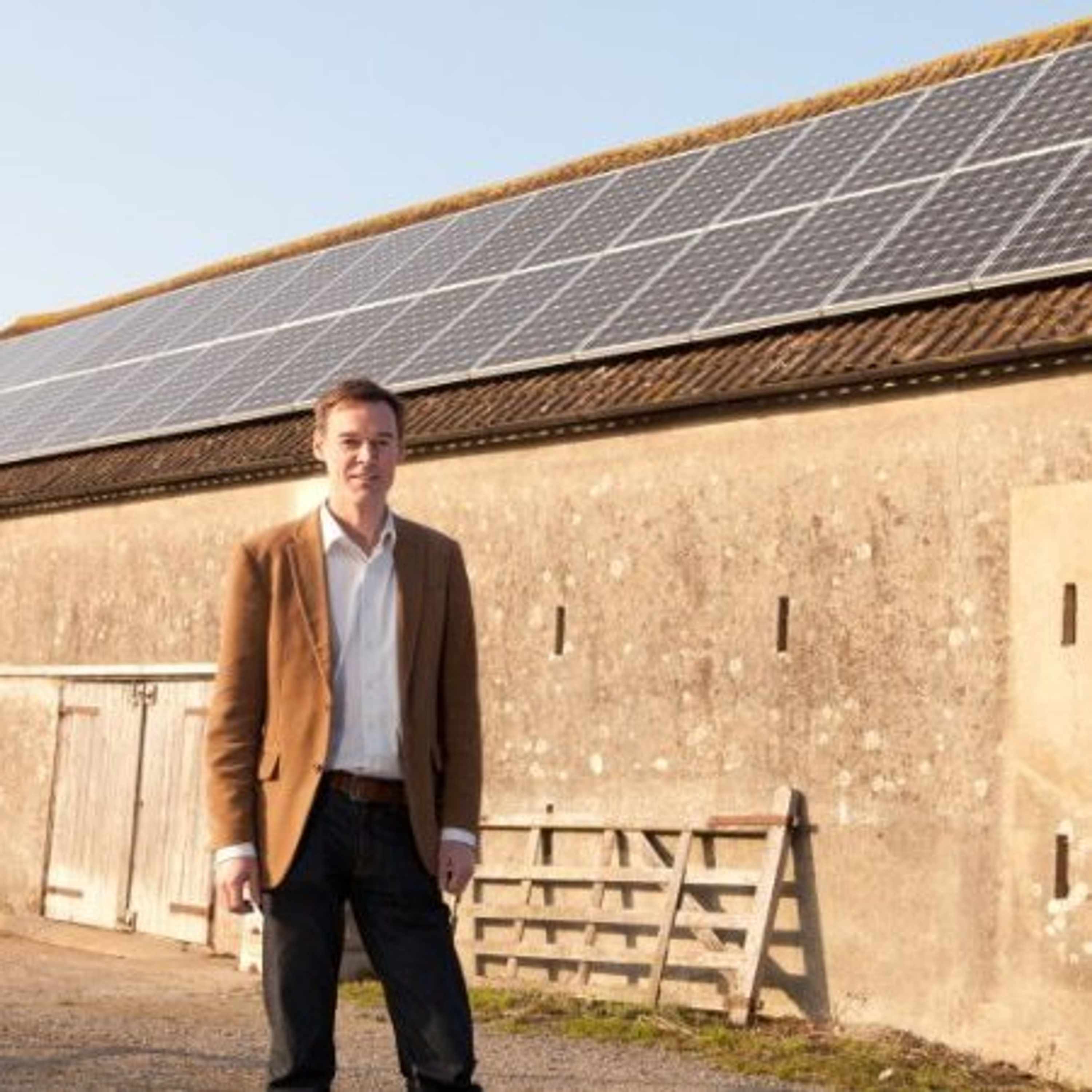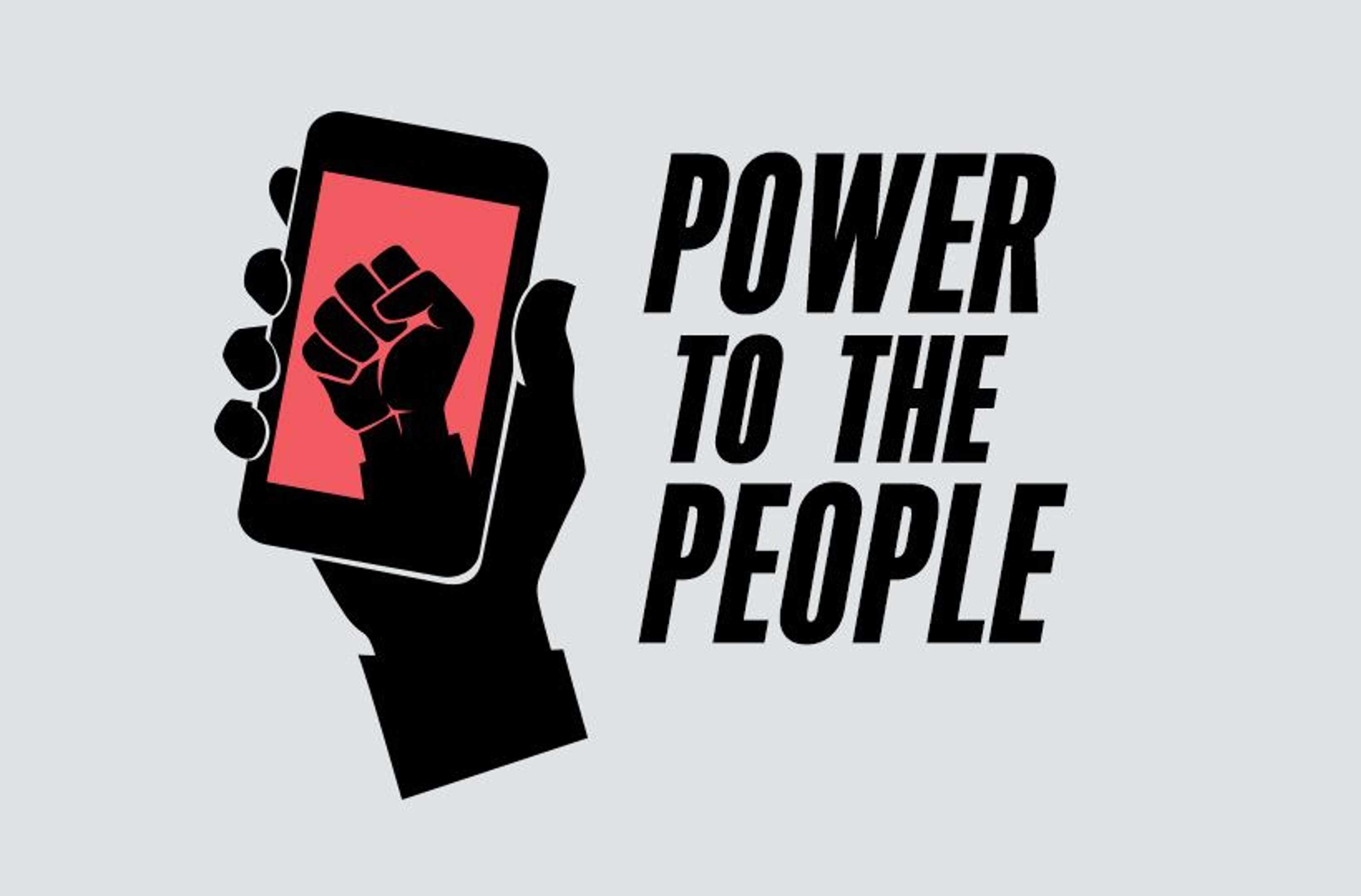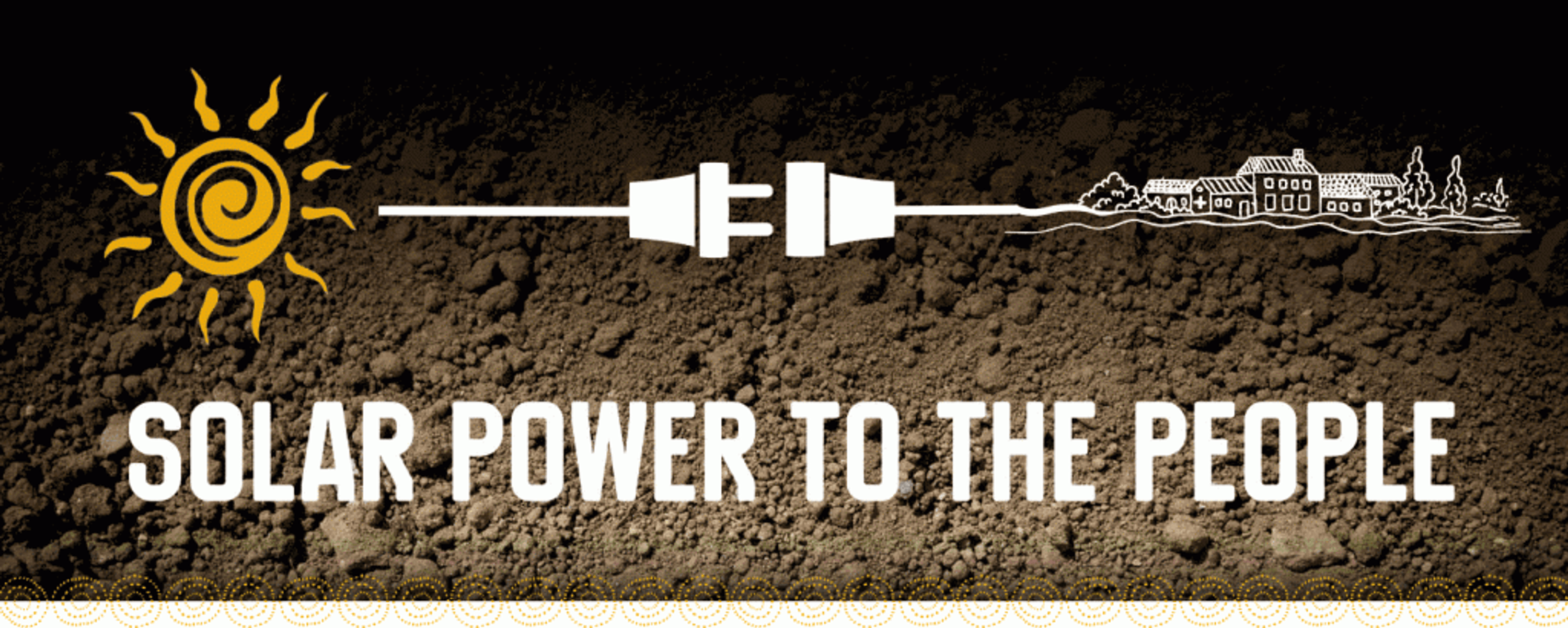You say you want an energy revolution? – then you need to get involved and this is how...
You say you want an energy revolution? – then you need to get involved and this is how...

 By Howard Johns Howard Johns, author of energy revolution, is an energy engineer, entrepreneur, business leader and activist. Howard founded Southern Solar a national solar energy company, and Ovesco a locally owned renewable energy cooperative. Howard is convinced we have all the technology and money we need to implement the climate and energy solutions we need. It is now time for lots of people to get involved with making it happen.
By Howard Johns Howard Johns, author of energy revolution, is an energy engineer, entrepreneur, business leader and activist. Howard founded Southern Solar a national solar energy company, and Ovesco a locally owned renewable energy cooperative. Howard is convinced we have all the technology and money we need to implement the climate and energy solutions we need. It is now time for lots of people to get involved with making it happen.
Why I wrote Energy Revolution
I have spent 20 years in the field of energy and climate – doing a degree featuring both in the early 1990s. As soon as I understood the enormity of the challenge of climate change I started protesting – putting my body in the way of the machine – trying to stop an opencast mine amongst other things. It was all I could think to do in response. I soon realized that to make any changes I was going to have to find solutions and make them accessible to people if we were ever going to change the situation. I then went onto set up a solar energy company and installed thousands of systems on homes and businesses across the country. I also set up a community owned energy company – Ovesco, which built the first community owned PV power station in the UK. Politics have featured heavily in the last 10 years of my work and I ended up protesting again. This time I was in a suit and going head to head with Government Ministers on national TV over their disastrous handling of the UK renewable energy support.  This brush with government departments and politicians convinced me that in order to make the changes we need to make – to 100% renewable in a very short period of time – we cannot rely on our politicians to give us the right conditions to make it happen. In fact it seemed to me that government departments were captured by the vested interests that keep us locked in business as usual and ultimately climate disaster. So my conclusion is that the only way we will make these changes are by building a social movement. Not just a protest movement – which is already well underway. But a social business movement, that literally disarms the existing businesses, utilities, oil companies etc. This sounds like a tall order but I believe it is not only possible but a huge opportunity as well. So I wrote this book as a handbook for someone who gets this idea and wants to be involved with making it happen. [product id="9158"]
This brush with government departments and politicians convinced me that in order to make the changes we need to make – to 100% renewable in a very short period of time – we cannot rely on our politicians to give us the right conditions to make it happen. In fact it seemed to me that government departments were captured by the vested interests that keep us locked in business as usual and ultimately climate disaster. So my conclusion is that the only way we will make these changes are by building a social movement. Not just a protest movement – which is already well underway. But a social business movement, that literally disarms the existing businesses, utilities, oil companies etc. This sounds like a tall order but I believe it is not only possible but a huge opportunity as well. So I wrote this book as a handbook for someone who gets this idea and wants to be involved with making it happen. [product id="9158"]
What’s in the book?
This is a book about hope and solutions, about action and community, about the power of small groups to change everything. The book is in four sections. Part one is a download about how we got here. First we need to immerse ourselves in the problems, for a brief period, to give the knowledge and drive to work on the solutions. As one of my inspirations says to me, “in the darkness you find the gold” and I encourage you to dive into the darkness, and find the gold within yourself. Take a whistle stop tour from Edison and Tesla, to fracking and tar sands, via energy that will be ‘too cheap to meter’, islands sinking beneath the oceans, politicians who seem powerless to effect change and straight on to the next big crash – unburnable assets. Step on board for what could turn out to be the worst fracking nightmare of a future, unless we realise where we are and take some action. This is the grounding for the energy activist. It is the brief story of the energy system and how it developed. Most people don’t realize that the electricity system that provides our electricity wastes about 80% of the energy that goes into it. Over 60% of the energy goes up the chimney as waste heat. We are led to believe that renewable energy systems only work because of subsidy, but actually it turns out that subsidies for fossil fuels are much higher. And right now there are still one and a half billion people who have no access to electricity. This is what we call the modern world.  Part two is all about the revolution and inspiration 100% renewable has already happened and part two tells the story of 14 countries and some amazing pioneers who made these transformational stories a reality. Islands that were totally dependent on fossil fuels that over the course of 10 years transformed their energy supply to be completely renewable and in part community owned. Even whole countries that went 100% renewable. I interviewed people from all over the world who had led their community in change, and asked them what they did and what motivated them to do the work. These were often ordinary people who have achieved amazing things for their community. Just like you could. There are so many benefits from going 100% renewable and there has never been a better time to bring your community together to make it happen. Part three is the how to guide So hopefully you are now feeling inspired and understanding that a total transformation is not only possible, but it’s also a huge opportunity. This bit is the nuts and bolts. It covers all the aspects you would need to consider to set up a community owned energy company. Finance, legal, technology, people, marketing, business models. I tried to write a mini MBA for the community energy activist. This section would be your signpost to setting up a social business in community energy. It’s what you need to get started.
Part two is all about the revolution and inspiration 100% renewable has already happened and part two tells the story of 14 countries and some amazing pioneers who made these transformational stories a reality. Islands that were totally dependent on fossil fuels that over the course of 10 years transformed their energy supply to be completely renewable and in part community owned. Even whole countries that went 100% renewable. I interviewed people from all over the world who had led their community in change, and asked them what they did and what motivated them to do the work. These were often ordinary people who have achieved amazing things for their community. Just like you could. There are so many benefits from going 100% renewable and there has never been a better time to bring your community together to make it happen. Part three is the how to guide So hopefully you are now feeling inspired and understanding that a total transformation is not only possible, but it’s also a huge opportunity. This bit is the nuts and bolts. It covers all the aspects you would need to consider to set up a community owned energy company. Finance, legal, technology, people, marketing, business models. I tried to write a mini MBA for the community energy activist. This section would be your signpost to setting up a social business in community energy. It’s what you need to get started.
Step forward in hope
There are quite a few reasons that I am in many ways more hopeful than I have ever been, that it is possible to make the transformation we need. One of these is that this transformation is already gathering pace as renewable energies become a cheaper form of energy than fossil fuels. This means that access to solar and wind power will most likely be the starting point for billions of people, which is great news. Fundamentally it means that those communities that wake up to the opportunity of creating their own renewable energy social businesses will be more resilient and better off than those who don’t. Energy coops can become like little engines of well being in a community, generating more than just clean energy, but new asset backed investments, tackling fuel poverty and creating jobs in the process. What’s not to like? [product id="9158"]


